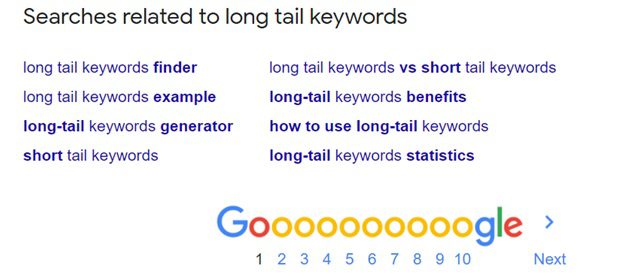
Whether you’re an avid marketer or an entrepreneur, writing content will be an integral component of your career. For obvious reasons, you want to make sure your brain is brimming with ideas instead of getting stuck in a lurch, i.e. writer’s block.
The truth is, writer’s block can happen to anyone. Ask any professional writer and they will tell you tales of their struggles. Most people try too hard to be perfectionists, not realizing the fact that perfectionism is a myth. You’ll always find flaws that need fixing. If anything, perfectionism can lead to lower self-esteem and hurt your bottom line.
We have narrowed down 8 underused ideas to get better content ideas – whether it’s for research articles, ebooks, podcasts, YouTube videos, and everything in between.
Let’s get down to brass tacks.
1. Create a Content Schedule and Stick to It
It’s foolhardy to not plan a content schedule and stick to it.
Many writers sit down and contemplate what they’ll be writing about. This kills time and is grossly inefficient.
Instead, try to create a list of potential topics to write on in one sitting. This will take a few hours (maybe even a few days), but you’ll always have a good influx of content to write about.
As a general rule, you should create enough content ideas to last at least one month. If you’re publishing 4 posts per week, try to aim for at least 20 to 30 new ideas. Cycle through these ideas and pick ones that make the most sense.
This method works because your mind is focusing on just one task at a time. Contrary to what we are led to believe, the human brain is woefully under equipped to deal with multitasking.
2. Look Up Your Competition
This is the oldest trick in the book – getting inspiration from your competition.
Simply hit up their website and social media profiles to read what they’re talking about. Go through their posts. Check out their pictures. See how they’re interacting with their followers (and other brands).
If you’ve got many social media followers, you can bounce off ideas from them by asking for content suggestions. They will be more than happy to help you out with ideas for content. It’s certainly better than anticipating what they’ll like and what they won’t.
Post a question on your social media and ask them for feedback. For instance, if you review new products, ask your audience what new gadget they would like you to review.
3. Look Up Google
Google search results are a great place to start looking for content ideas if you’re working with a generic topic.

Take a look at the suggested keywords that come up when you type in “keyword research”.
These suggestions are helpful because they indicate audience interest.
Pro tip: You should look at the related searches because they’re directly related to your query. It’s a treasure trove of ideas and can help you get things rolling.

Not sure what to search for on Google? Try starting with content titles that you’ve already published on your website.
In addition, these suggestions are SEO friendly since you directly sourced them from Google. A win-win.
It also helps to get in touch with content writers and ask them for their views on new ideas. These professionals usually have access to tools that let them find the best topics to write on.
4. Blog on Recent Events
Depending on your niche, it may be profitable to discuss the latest trends.
However, if the latest news doesn’t align with your brand image or resonate with your audience, you may want to stay away from covering the latest news.
There are definitely ways of becoming more creative. For instance, when you watch the news or check out updates from a news magazine, try to see if you can make the content relevant to your audience.
Tell your readers more about the event and why they should pay attention to the new trend.
5. Listen to Sales Calls
It helps to listen to your customers’ problems and frustrations directly from their mouth: by tuning in to your sales calls. What are the most common pain points prospects are complaining about? Pay attention to the words and jargon they use. This will give you ideas for a blog or article that includes those exact words and address their problem.
Probe your customers to tell you more about their problems. If you’re managing an online store, here’s what you might want to ask them:
- How did you find out about our website?
- What problem are you hoping to solve with this product?
- What products have you already tried?
Prepare a similar list of questions that are relevant to your business and give them to your sales team. The customer’s answer will reveal content ideas to solve their problem, whether it is through FAQ pages, infographics, educational materials, video tutorials, and long-form blog posts.
6. Visit General Forums
One of the best places to find inspiration for content is Reddit. It’s a huge platform where people post stuff about everything under the sun. Simply type what your target audience is interested in, or the name of your industry, and you will start finding posts that can be turned into content.
Another place to start looking would be Quora, although we would be the first to admit that some of the questions are becoming a bit too redundant. This is why Reddit is better overall when it comes to generating new ideas for content.
7. Visit Industry Specific Forums
If your industry is super niche and there aren’t very many platforms that discuss it, then you should focus your attention to niche forums. Back in the earliest days of the internet, forums were the platform of choice for people to chat. Today they’re less common but still have a place on the internet.
Reddit and Quora are general forums and have a treasure trove of content for niche content, but it’s worth exploring other forums for content ideas.
Simply go to Google and search for “ forum”. You will find various results.
8. Your Website’s Comment Section
You can also get user suggestions from comment sections of your blog posts and those of your competitors. If readers are asking you questions about the topic or telling you about things that you should have included, you can use their suggestions to create new content. This only works if you’ve got a decent audience base. If you don’t have enough readers yet, tune in to your competitor’s blog and see their comment section for ideas.
About Author:-
Dave Brown leads the content writing services team at Content Development Pros. He has worked with Fortune 500 companies as well as SMEs, helping them with their content needs. When he’s not busy working on content ideas, Dave spends his free time at the gym and watching Netflix.
